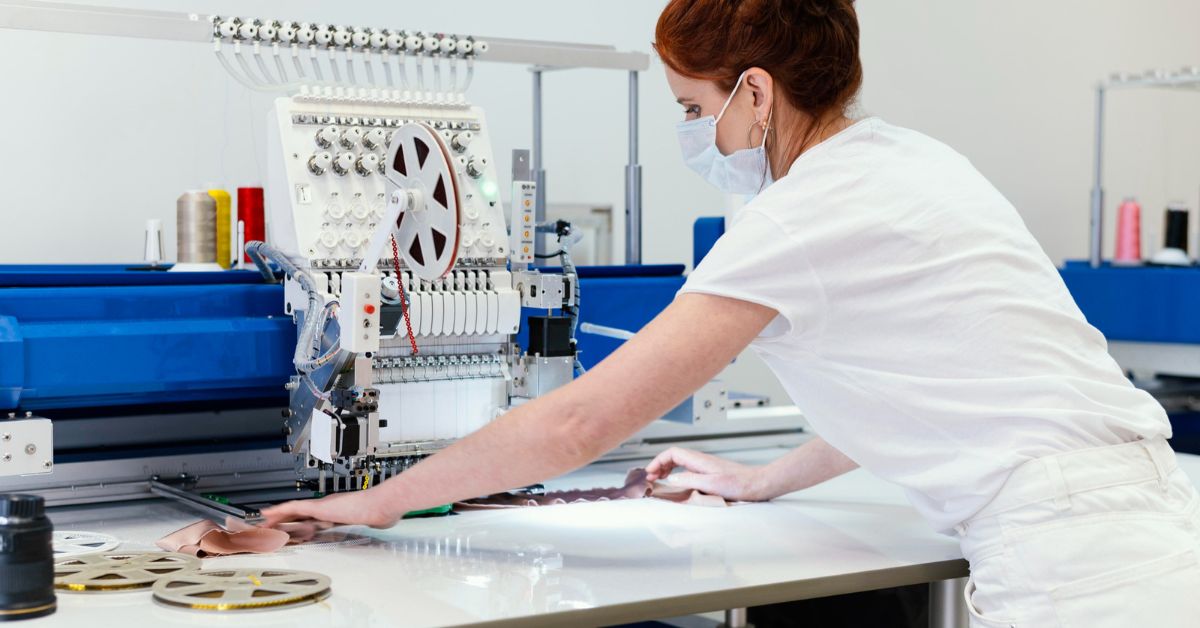
In the dynamic landscape of textile manufacturing, the symbiotic relationship between modern technology and the pursuit of enhanced quality has become increasingly evident. Revolutionary advancements in automation, materials science, and digital technologies are reshaping the traditional fabric of the industry. Automation and robotics optimise precision, while nanotechnology introduces novel materials with superior properties. Smart textiles, 3D printing, and advanced imaging technologies redefine the very nature of fabric, fostering innovation in design and functionality. T & A textiles and hosiery limited in Manchester employs modern technology to enhance textile quality. Through automation, advanced materials, and digital processes, they contribute to precision, efficiency, and innovation in textile manufacturing. This transformative synergy not only ensures the production of textiles with heightened durability and performance but also steers the industry towards sustainable and eco-friendly practices.
Automation of Complex Tasks:
Automation of complex tasks in the textile industry, facilitated by modern technology, has significantly elevated textile quality. Automated machinery and robotic systems execute intricate processes with precision, minimising human error and ensuring consistent production. This technology enables tasks such as weaving and spinning to be performed efficiently and flawlessly. Moreover, automated quality control systems utilise advanced imaging technology, such as computer vision, to detect and rectify defects in real time. Overall, the role of automation in complex textile tasks enhances operational efficiency, reduces variability, and contributes to the production of high-quality textiles, meeting stringent standards.
Automated looms, spinning machines, and other robotic systems contribute to consistent and high-quality textile production.
Enhances Quality Control Procedures :
Modern technology significantly enhances quality control procedures in the textile industry, ensuring the production of high-quality materials. Advanced imaging technologies, such as computer vision and machine learning, enable automated inspection, swiftly detecting defects and inconsistencies in textiles. Digital sensors and monitoring systems provide real-time data on production processes, facilitating immediate adjustments to maintain quality standards. Furthermore, the integration of Radio-Frequency Identification (RFID) technology assists in tracking and managing the supply chain, ensuring transparency and traceability. These technological innovations not only optimise quality control but also contribute to increased efficiency, reduced waste, and overall improvements in the quality of textile products.
Development of Better Fabrics:
The development of better fabrics, propelled by modern technology, significantly elevates textile quality. Advanced materials and manufacturing techniques enhance fabric properties, promoting durability, comfort, and functionality. Innovations like nanotechnology and 3D printing enable the creation of intricate, high-performance textiles with improved resistance to environmental factors. Furthermore, smart textiles, integrating sensors and wearables, revolutionise the industry by offering enhanced functionalities like health monitoring. Improved quality control through imaging technology ensures defect-free fabrics, while sustainable practices and energy-efficient technologies address environmental concerns. In essence, the synergy of technology and fabric development empowers the textile industry to meet consumer expectations for superior, versatile, and sustainable textile products.
More Efficient Production Methods:
More efficient production methods, enabled by modern technology, play a pivotal role in elevating textile quality. Advanced machinery and automation streamline manufacturing processes, ensuring precision and reducing errors. Technologies like digital fabrication and 3D printing enhance the intricacy and customisation of textile structures, contributing to superior design and functionality. Moreover, efficiency gains through computer-aided design and manufacturing optimise production workflows, enabling faster turnaround times and consistent quality. Improved energy efficiency and sustainable practices further underscore the positive impact of technology on the entire textile manufacturing ecosystem, aligning with contemporary demands for both quality and environmental responsibility.
Development of Intelligent Robotic Systems :
The development of intelligent robotic systems plays a pivotal role in advancing textile quality. These robotic systems, equipped with sophisticated sensors and automation capabilities, enhance precision and efficiency in textile manufacturing processes. Automated robotic looms and machinery contribute to consistent production, reducing errors and improving the overall quality of textiles. Additionally, robotic systems integrated with computer vision technology enable real-time quality control by identifying and rectifying defects during production. The use of intelligent robotics not only ensures higher standards in textile manufacturing but also fosters innovation, allowing for the creation of complex textile structures and designs that contribute to improved overall product quality.
By leveraging these technological advancements, the textile industry can enhance product quality, increase efficiency, and address sustainability challenges, ultimately meeting the evolving demands of consumers and the market.
Also, read: Useful Tips for Choosing the Perfect Bed Linen







